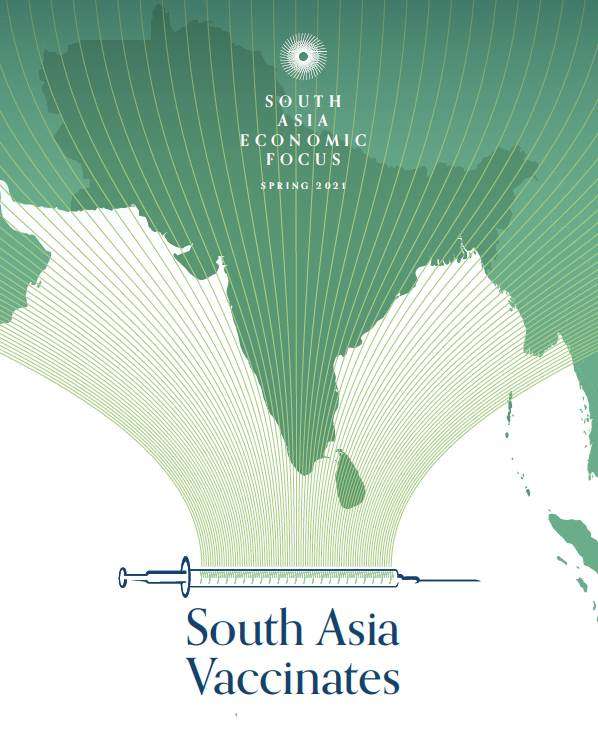
Prospects of an economic rebound in South Asia are firming up as growth is set to increase, climbing from historic lows in 2020 and putting the region on a path to recovery.
But growth is uneven and economic activity well below pre-COVID-19 estimates, as many businesses need to make up for lost revenue and millions of workers, most of them in the informal sector, still reel from job losses, falling incomes, worsening inequalities, and human capital deficits.
LATEST ECONOMIC DEVELOPMENTS AND OUTLOOK
There are clear signs of an economic rebound in South Asia
- Regional growth is set to increase by 7.2 percent in 2021 and 4.4 percent in 2022, climbing from a historic GDP decline of 5.4 percent in 2020. Per-capita income in South Asia is expected to revert to its pre-COVID levels by 2022.
- India's economy, South Asia's largest, is expected to grow more than 10 percent in the fiscal year 2021-22—a substantial upward revision of 4.7 percentage points from January 2021 forecasts.
- The outlook for Bangladesh, Nepal, and Pakistan has also been revised upward, supported by better than expected remittance inflows:
- Bangladesh's gross domestic product (GDP) is expected to increase by 3.6 percent in fiscal year 2020-21.
- Nepal's GDP is projected to grow by 2.7 percent in the fiscal year 2020-212.
- Pakistan's growth is expected to reach 1.3 percent in fiscal year 2020-21, slightly above previous projections.
- In Afghanistan, a one percent growth is expected in 2021. There are large risks to this forecast due to the security situation and political uncertainty.
- In Bhutan, GDP will fall further (by 1.8 percent) in FY2020-21 before gradually recovering to pre-COVID-19 levels.
- In Maldives, real GDP is projected to grow by 17.1 percent in 2021 after the country experienced the most devastating economic effects of COVID-19 in the region.
- In Sri Lanka, the economy is expected to grow by 3.4 percent in 2021.
- All South Asian countries should see gradual declines in poverty. At $3.20 a day, the poverty rate in the region is forecasted to fall to a range between 37 percent and 42 percent by 2022, down from a 42 to 47 percent range in 2020.
- Exports of goods are recovering. Remittance inflows were unexpectedly strong in 2020, though it is not clear how permanent that is.
- Government consumption is expected to rise by 16.7 percent in 2021, propped by India's strong fiscal stimulus.
- The improved regional economic outlook results from South Asian countries' efforts to keep their COVID-19 caseload under control and swiftly roll out vaccine campaigns.
- Policies that helped support recovery include transitioning from widespread lockdowns to more targeted interventions, accommodating monetary policies and fiscal stimuli through targeted cash transfers and employment compensation programs.
But the recovery remains fragile
- The pandemic is not yet fully under control, and vaccination has only just started. Vaccinating the whole population is a challenge as capacity in health care systems is limited. A third wave and the spread of new variants of the virus remain a threat in the region.
- Economic activity remains well below pre-COVID-19 estimates – in 2021, the level of economic activity will be around 12 percent below pre-pandemic growth path projections.
- Many businesses need to make up for lost revenue. Millions of workers, most of them in the informal sector, still reel from job losses, falling incomes, worsening inequalities, and human capital deficits.
- Countries dependent on tourism, especially Bhutan, Sri Lanka, Maldives, and Nepal were heavily affected by the crisis as their tourism sector could take significantly longer to fully recover.
- Fiscal deficits in the region have widened on average by almost 5 percentage points of GDP compared to the previous fiscal year.
- Debt sustainability is at risk as some countries have become more vulnerable to external shocks, particularly, Maldives, and Sri Lanka.
- COVID-19 has increased vulnerabilities as well as income, human capital acquisition, and gender inequalities.
VACCINATING AGAINST COVID-19 SAVES LIVES AND LIVELIHOODS
- The economic benefits of vaccination are huge: The current vaccination campaign in South Asia will prevent a cumulated 10 percent GDP loss in the year 2022 and beyond, at the cost of up to 0.55% of GDP in the region.
- Despite the positive cost-benefit of vaccination, South Asian governments lack the resources and health infrastructure and delivery capacity to purchase and distribute vaccines.
- A stronger COVAX facility is needed to centrally acquire and provide vaccines for free to countries with insufficient resources.
POLICY OPTIONS FOR A RESILIENT RECOVERY
- South Asia only spends 2 percent of its GDP on healthcare, lagging any other region. Countries need to further invest in preventive care, finance health research, and scale up their health infrastructure, including for mass and quick production of vaccines.
- The crisis presents an opportunity for South Asian countries to shift their policy priorities to build back better and increase resilience.
- The pandemic has underscored the importance of investing in preventive and primary care, especially for the poorest who can't socially distance, have less access to sanitation and health care, and have more comorbidities.
- Countries need to rethink their social protection and insurance programs to cover all workers. A better integration of informal workers into the economy will help protect them against shocks and increase the tax base and mobilize more resources.
- Countries needs to ramp up investments in human capital to boost their economies and help new generations grow up healthy and become more productive.
- Countries need to promote broadband access and expand digital services, such as Fintech money transfer (for both migrants and people in remote areas), biometric ID systems to support more portable social safety nets for formal and informal workers
Last Updated: Mar 31, 2021